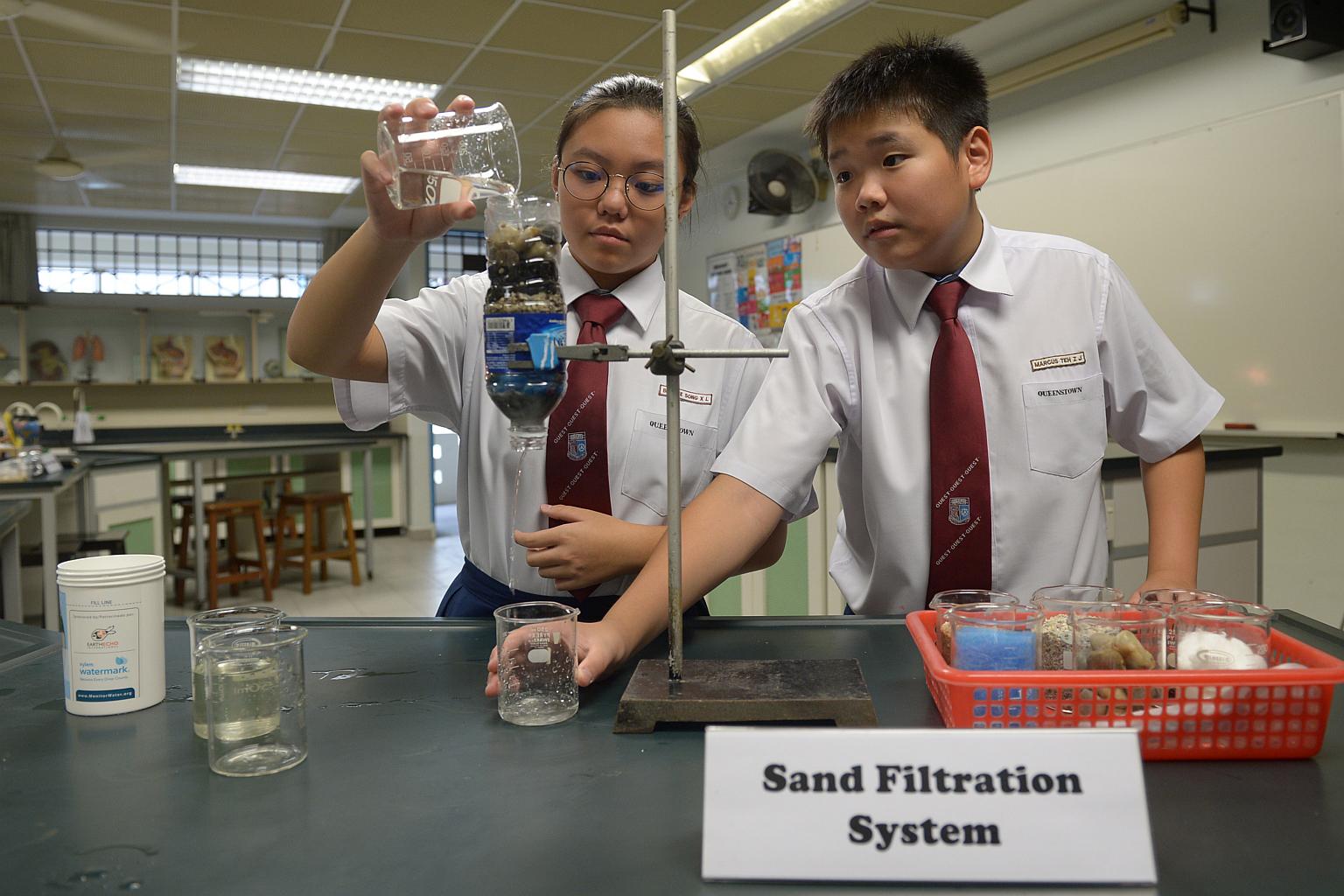Students work in teams to solve problems in water, energy and food sustainability
Sign up now: Get tips on how to help your child succeed

Queenstown Secondary School students Bernice Song and Marcus Teh, both 13, demonstrate a sand filtration system using water from the school's pond.
ST PHOTO: ALPHONSUS CHERN
Follow topic:
SINGAPORE - Solving problems in groups is the norm at Queenstown Secondary School, where students work on sustainability projects in water, energy and food.
In groups of four to five, they are given real-world problems, from checking out the quality of water in Singapore River to building a prototype of a solar energy-powered device.
The school's principal, Madam Rasidah Rahim, said the school decided on the theme of sustainability for its applied learning programme so that students could go beyond learning textbook knowledge. They are challenged to apply their knowledge in science and geography to come up with solutions.
"We want students to look at problem-solving and collaborative skills, which will be more critical, compared with content knowledge, which they can Google," Madam Rasidah said. "It's also an avenue to further explore subjects and enjoy learning, to grow in confidence and take on a solution mindset."
Students in Singapore are world-beaters in not just science, mathematics and reading, but also in the ability to solve problems collaboratively, according to the results of a new global test released on Tuesday (Nov 21) by the Organisation for Economic Cooperation and Development.
About 20 science and geography teachers are involved in Queenstown Secondary's programme, which started in 2014 with the lower secondary cohorts.
Secondary 1 students work on water sustainability projects, while the Secondary 2 students' focus is energy sustainability. The programme was extended last year to Secondary 3 students, with food sustainability as the theme.
Secondary 1 students Beatrice Song and Marcus Teh, both 13, came up with a water filtration system using different materials such as charcoal, sponge, cotton and pebbles.
"It was a lot of trial and error to find out which method was the best in filtering water," said Marcus. "We learnt how to work with each other. Each of us has different opinions and strengths... some of us can lead better, some of us remember things better."
At another school, Queensway Secondary School, students also learn to work in teams, to construct an underwater robot with the best aerodynamics. The activity is part of the school's applied learning programme, which started in 2015.
Using materials such as plastic, PVC pipes, foam and cable ties, students bounce ideas off one another, tweak their designs, and put their remotely operated vehicles to the test through a competition that was held last month.
Secondary 2 student Lucas Chin, 14, said there were definitely problems in the process. "Sometimes, the pipes were too short, not tight enough, or they kept falling apart... but we learnt to communicate well with one another, to try and include everyone's ideas for the design."

